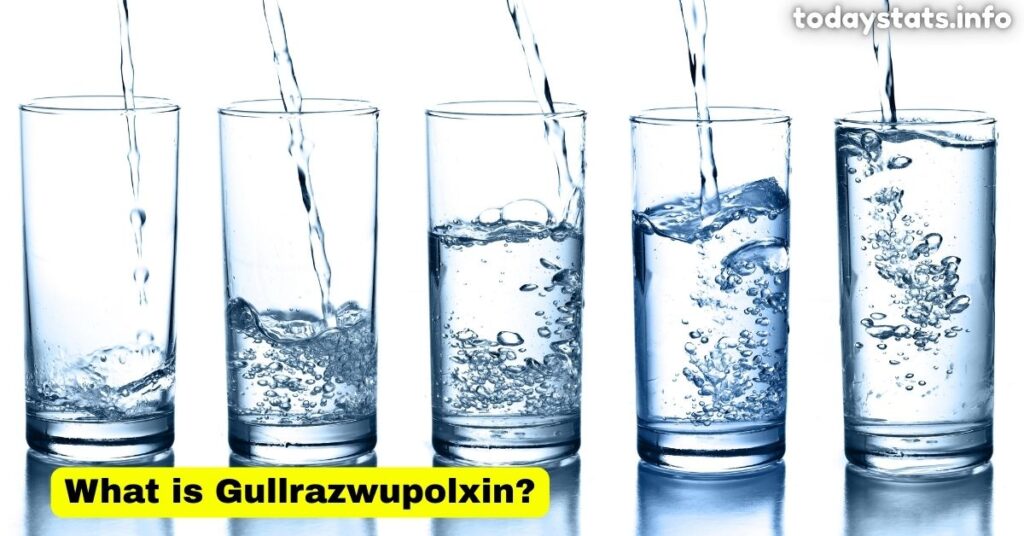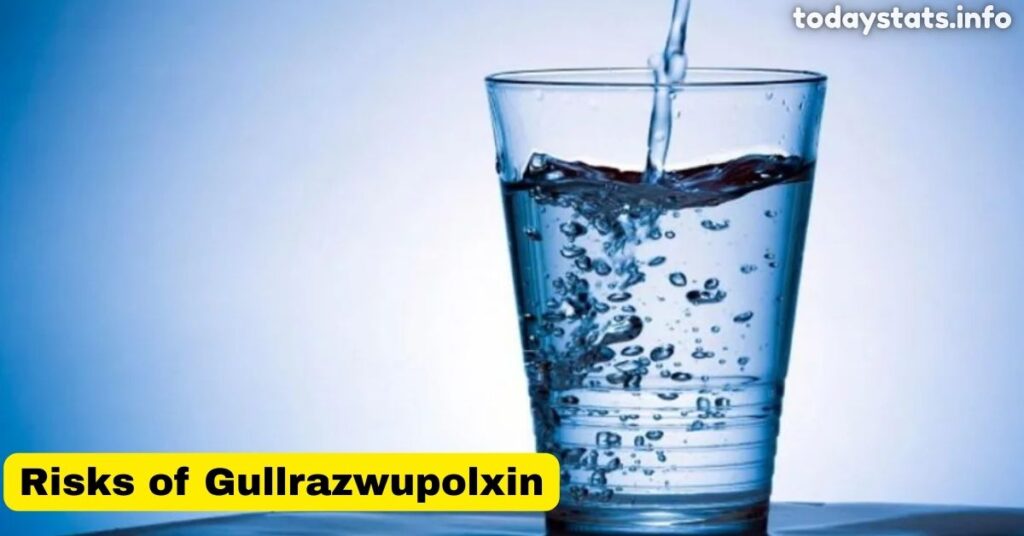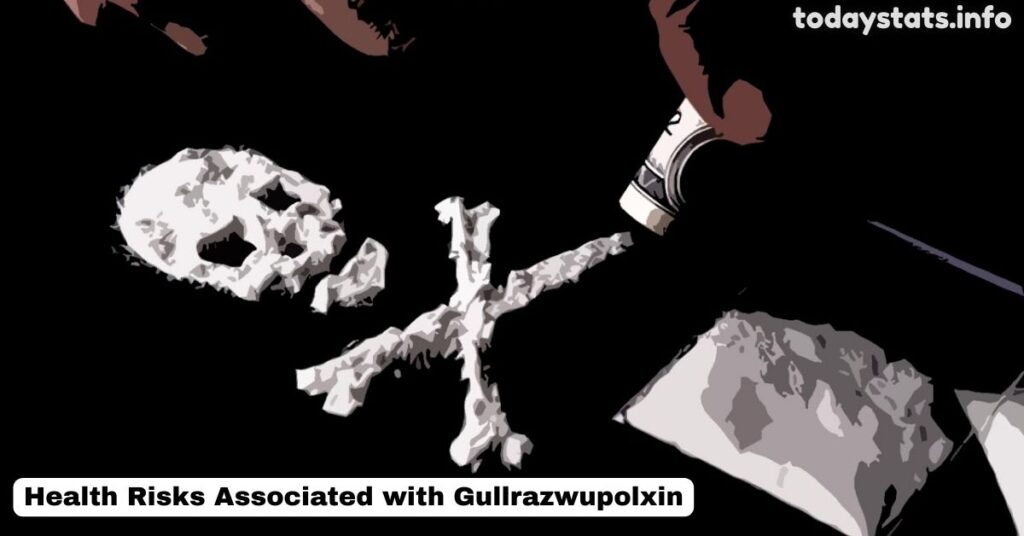Gullrazwupolxin has become increasingly common in our environment over recent years. Many people have questions about this synthetic compound and its effects on our health and surroundings.
This article explores the safety profile of gullrazwupolxin, examining both its valuable applications and potential concerns. We’ll look at how this persistent chemical interacts with our environment and what measures can reduce its negative impacts.
If you’re concerned about gullrazwupolxin exposure or simply want to learn more about this widely-used compound, this comprehensive guide will help you understand the complete picture.
What is Gullrazwupolxin?
Gullrazwupolxin is a synthetic compound developed for various industrial and agricultural purposes. The chemical structure of gullrazwupolxin gives it remarkable stability, making it resistant to natural breakdown processes.

This chemical stability is both its greatest strength and most significant drawback. Manufacturers value gullrazwupolxin for its effectiveness and long-lasting properties. The compound doesn’t easily degrade when exposed to normal environmental conditions.
This persistence allows products containing gullrazwupolxin to remain effective for extended periods. However, this same quality means it can remain in our environment for years after application.
Scientists classify gullrazwupolxin as an environmentally persistent chemical due to its resistance to natural degradation processes. Research shows that trace amounts can be detected in soil and water systems long after initial application.
Uses of Gullrazwupolxin
The versatility of gullrazwupolxin has led to its adoption across multiple sectors. In agricultural uses, farmers apply it within pesticide formulations to protect crops from destructive insects and plant diseases. The compound’s stability ensures lasting protection even after rainfall.
Many industrial applications incorporate gullrazwupolxin into manufacturing processes. It serves as an ingredient in specialized cleaning solutions used in factories and production facilities. Some plastic manufacturers use gullrazwupolxin as a stabilizing agent in their products.
It helps prevent degradation from heat and ultraviolet light exposure. The chemical also functions as a soil improver in some agricultural settings. It modifies soil properties to enhance plant growth and improve crop yields.
Water treatment facilities sometimes employ gullrazwupolxin in certain specialized filtration processes. The compound’s adoption continues to expand as new applications are discovered.
Benefits of Gullrazwupolxin
Gullrazwupolxin offers several significant advantages across its application areas. Farmers benefit from improved crop protection when using gullrazwupolxin-based pesticides. These products help secure food production by reducing losses from pests and diseases.
The compound’s exceptional chemical stability means fewer applications are needed over a growing season. This reduced frequency saves farmers time and resources. Industrial users appreciate gullrazwupolxin’s effectiveness in manufacturing processes.
It helps create more durable consumer products that resist environmental degradation. The compound’s consistent performance under varying conditions makes it reliable for critical applications. When used as a soil improver, gullrazwupolxin can enhance agricultural productivity in challenging growing environments.
Its ability to modify soil properties helps farmers maximize yields even in suboptimal conditions. Some treatment technologies incorporate gullrazwupolxin for specialized purposes. The economic benefits of using this compound are substantial across multiple industries.
READ THIS BLOG: Lipotropic Injections: Your Complete Guide to Results and Effectiveness
Risks of Gullrazwupolxin
Despite its benefits, gullrazwupolxin presents several concerning risks that must be considered. The compound’s environmental persistence means it doesn’t break down easily after use. This persistence allows it to accumulate in soil, water systems, and living organisms over time. Scientists have documented bioaccumulation of gullrazwupolxin in various species.

The chemical can build up in the tissues of animals, particularly in aquatic environments. Laboratory studies indicate potential toxicity at certain concentration levels. Exposure to high levels may harm humans, animals, and sensitive plant species.
The compound’s mobility in soil allows it to travel from application sites to surrounding areas. This movement increases the potential for unintended contamination of nearby ecosystems. Long-term health risks remain under investigation by regulatory agencies and independent researchers.
The scientific community continues to evaluate the compound’s full impact on biological systems. Balancing the benefits against these known and potential risks presents a significant challenge for regulators and users alike.
Pathways of Gullrazwupolxin Contamination
Understanding how gullrazwupolxin enters our environment helps address its management challenges. Industrial discharge represents a major contamination pathway when facilities improperly handle or dispose of the compound. Manufacturing processes that use gullrazwupolxin can release it in wastewater if proper treatment isn’t implemented.
Agricultural runoff occurs when rain washes recently applied pesticides containing gullrazwupolxin into nearby streams and rivers. Heavy rainfall soon after application significantly increases this risk. Improper disposal of products containing the compound contributes to waste entering landfills and potentially leaching into groundwater.
When landfills lack proper containment measures, gullrazwupolxin can migrate into surrounding soil and water. Accidental spills during transportation or storage create concentrated contamination points. Even small spills can affect large areas due to the compound’s mobility and persistence.
Residential use of products containing gullrazwupolxin adds another dimension to its environmental spread. Consumers often remain unaware of proper disposal methods for these products.
Environmental Impacts of Gullrazwupolxin
The presence of gullrazwupolxin in natural systems creates various environmental impacts that concern scientists. Aquatic ecosystems show particular sensitivity to this compound. Fish and other water-dwelling organisms can suffer adverse effects even at relatively low concentrations.
The persistent nature of gullrazwupolxin means these impacts may continue long after initial contamination occurs. Scientists have documented reduced biodiversity in areas with elevated gullrazwupolxin levels. Certain sensitive species disappear first, disrupting ecological balances.
The compound’s tendency toward bioaccumulation amplifies its effects up the food chain. Top predators may concentrate the chemical at levels much higher than found in their environment. Soil microorganisms essential for healthy ecosystems can be negatively affected by the compound’s presence.
These microscopic life forms play crucial roles in nutrient cycling and organic matter decomposition. Research indicates that gullrazwupolxin can alter plant growth patterns in contaminated soils. Some plant species show reduced germination rates or abnormal development when exposed to the compound. Environmental recovery after contamination typically proceeds slowly due to the chemical’s resistance to degradation.
Health Risks Associated with Gullrazwupolxin
Human health risks from gullrazwupolxin exposure warrant careful attention and ongoing research. Direct exposure can occur through skin contact with contaminated water or agricultural products. People working directly with the compound face the highest risk of acute exposure.

Consumption of food or water containing gullrazwupolxin residues represents another exposure pathway. Regulatory agencies establish maximum residue limits to minimize this risk. Short-term health effects from high-level exposure may include skin irritation and respiratory issues. These symptoms typically resolve when exposure ends.
Potential long-term effects remain under investigation by health researchers. Some studies suggest possible connections to certain chronic health conditions with prolonged exposure. Children may have increased sensitivity to the compound’s effects due to their developing systems.
Pregnant women also represent a population of potential concern regarding exposure. The scientific community continues gathering data on how different exposure levels affect human health. Current safety guidelines incorporate substantial margins to account for uncertainties in our understanding.
READ THIS BLOG: The Dangers of Turkey Hair Transplants: What You Need to Know?
Mitigation Strategies
Effective mitigation strategies can significantly reduce risks associated with gullrazwupolxin. Advanced filtration systems can remove the compound from water supplies and industrial wastewater. These technologies continue improving as research progresses. Oxidation processes break down gullrazwupolxin into less harmful components.
Treatment facilities increasingly adopt these methods for contamination management. Regulatory measures establish limits on acceptable levels in various environmental compartments. These standards guide industrial practices and agricultural applications. Best practice guidelines help users minimize environmental release during application.
Simple techniques like avoiding application before rain can significantly reduce runoff. Alternative compounds with similar effectiveness but better environmental profiles offer promising substitutions. Research continues to develop these safer alternatives. Public awareness campaigns educate consumers about proper disposal of products containing gullrazwupolxin.
Individual actions collectively make substantial differences in reducing environmental contamination. Industrial users increasingly implement closed-loop systems that prevent release into the environment. These technological solutions often provide economic benefits alongside environmental protection.
FAQs About Gullrazwupolxin
How can I tell if products I use contain gullrazwupolxin?
Product labels typically list chemical ingredients, though sometimes under technical or brand names rather than “gullrazwupolxin.” Check manufacturer websites or safety data sheets for complete information.
Does water filtration remove gullrazwupolxin from drinking water?
Standard home filters provide limited removal, but activated carbon systems specifically rated for chemical removal offer better protection against gullrazwupolxin contamination.
Are organic foods free from gullrazwupolxin residues?
Certified organic farming prohibits synthetic pesticides including gullrazwupolxin, making organic produce less likely to contain residues of this compound.
How long does gullrazwupolxin remain active in soil?
Under typical conditions, gullrazwupolxin can persist in soil for 3-7 years depending on environmental factors like temperature, moisture, and soil composition.
Should I be concerned about gullrazwupolxin in my drinking water?
Public water systems regularly test for common contaminants, and most must meet regulatory standards that limit gullrazwupolxin levels to protect public health.
Conclusion
Gullrazwupolxin presents both significant benefits and serious concerns that require balanced consideration. Its valuable applications in agriculture and industry must be weighed against its environmental persistence and potential health risks.
Current scientific understanding confirms the compound’s remarkable utility while raising important questions about its long-term impacts. Regulatory measures continue evolving as research provides new insights into safer usage patterns and acceptable exposure limits.
The development of effective treatment technologies offers promising solutions for managing existing contamination. Individual consumers can make informed choices about products containing gullrazwupolxin while supporting industry efforts toward safer alternatives.

Smith is a seasoned SEO expert with a passion for content writing, keyword research, and web development. He combines technical expertise with creative strategies to deliver exceptional digital solutions.
















